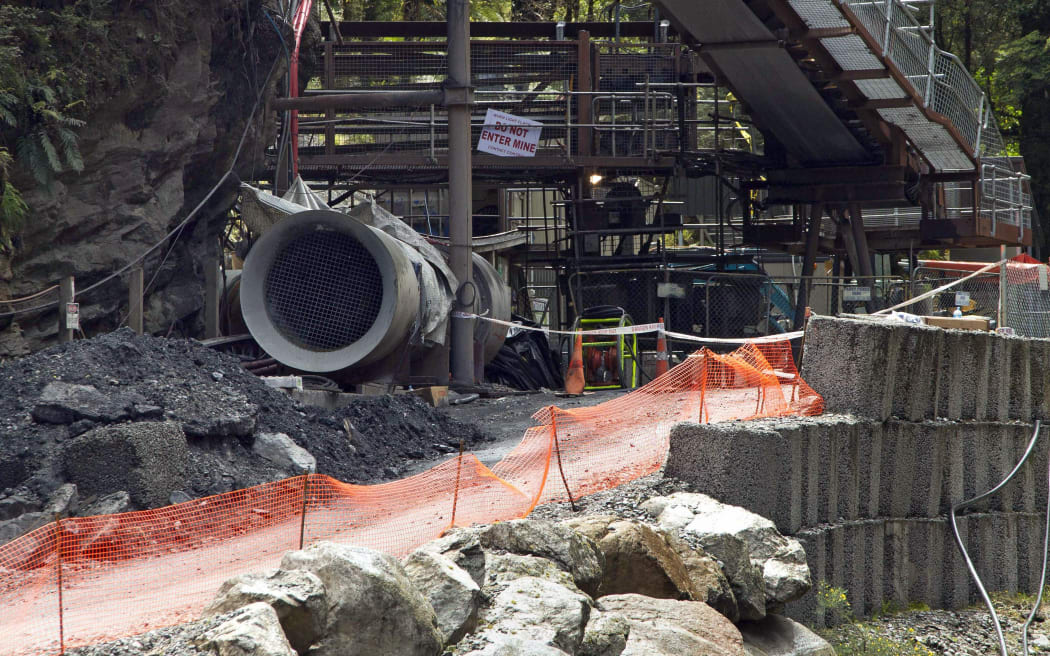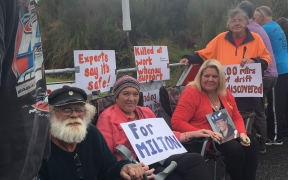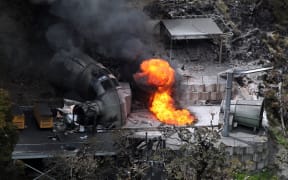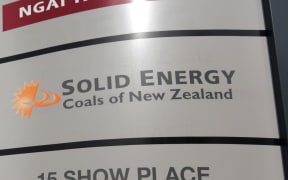Families furious with Solid Energy's decision to proceed with plans to permanently seal the Pike River Mine are looking at legal action.
Saturday was the sixth anniversary of the tragedy at the West Coast mine, in which 29 men died.
Solid Energy bought the mine assets four years ago. It began work today to permanently seal the mine, saying it had to meet its deadline, set by WorkSafe, to seal the mine by the end of the month.
Some of the victims' families have staged a protest in recent weeks, saying the mine should not be closed until the victims' bodies have been retrieved.
A lawyer for the families, Nigel Hampton QC, said he filed an application with WorkSafe to review the closure plans on Friday.
Work should have stopped until the review was completed, he said.
"What happened on Friday was that WorkSafe acknowledged the application for review and said it would go through the usual processes.
"But, at the same time, [it] wrote to Solid Energy saying that 'this is what is happening, but you can go ahead and seal this mine of your own volition if you wish', and in fact encouraging Solid Energy to continue on with their actions."
He planned to talk to the families this afternoon to decide the next course of action.
'False hope'
In a strongly worded statement released earlier today, Solid Energy hit out at "inaccurate and misleading statements in the media", saying they were feeding "false hope".
"It is disingenuous and, frankly, deeply disappointing for commentators who lack the full information base on which this decision was made - and who bear no legal responsibility for the outcomes of the re-entry project - to once again raise hopes regarding re-entry," the statement said.
The company said its decision was based on an exhaustive investigation into the feasibility of safe re-entry and was backed by the independent expertise of Emeritus Professor Jim Galvin - a professor of mining engineering at the University of New South Wales and an internationally recognised expert in underground coal mining risk management.
Professor Galvin advised directors throughout the assessment process and concluded Solid Energy's risk assessment process was rigorous and their decision was informed by quality information regarding the residual risks, it said.

The entrance to the Pike River coal mine in November 2010 Photo: AFP
The decision to permanently seal the mine had prompted the protest, with some of the families staging a sit-in at the road's entrance.
But Solid Energy said there had been no material improvements in the conditions in the drift since the decision was made to seal the mine in November 2014.
"The reality is that for the entire time since Solid Energy took over Pike Rive Mine in 2012, the drift has been full of nearly pure methane. There is no report that shows that gas levels have reduced.
"There are no recent tests that show the seal is unnecessary. In fact, our continuous monitoring shows that methane remains at around 98 percent and is continually being released into the mine and the drift," it said.
It went on to say the idea of a temporary seal was not realistic.
"A methane-filled mine, with only a temporary seal, in a difficult to access, geotechnically unstable area is unacceptable. We will continue with our 2014 decision to seal the mine, and once this task is completed, it will be handed over to the Department of Conservation," it said.
A spokesperson for the families, Bernie Monk, said the fact the drift was full of nearly pure methane meant the mine was inert.
That meant an explosion could only occur if oxygen was allowed into the drift, he said.
"We had a plan of attack - of pumping nitrogen into the drift and up to the top of the mine to take the place of any oxygen that would come into and be able to release the methane into the atmosphere."
Solid Energy said, while it had deep sympathy for the families of the 29 men, the responsibility for any re-entry rested with its directors, and the risk of endangering more lives was not one it was willing to take.
"The fact remains that the legal responsibility for the safety of any re-entry remains with the directors of Solid Energy. Solid Energy did not own the mine at the time of the explosions.
"While we have deep sympathy for the position of the families, the directors' decision is entirely motivated by our responsibility for the safety of the site and any person entering the mine. The risk of endangering more lives is not a risk we believe should be taken."
Solid Energy said it had stopped work on the seal in the run-up to the sixth anniversary, but it needed to resume today so it could meet the deadline set by WorkSafe.





